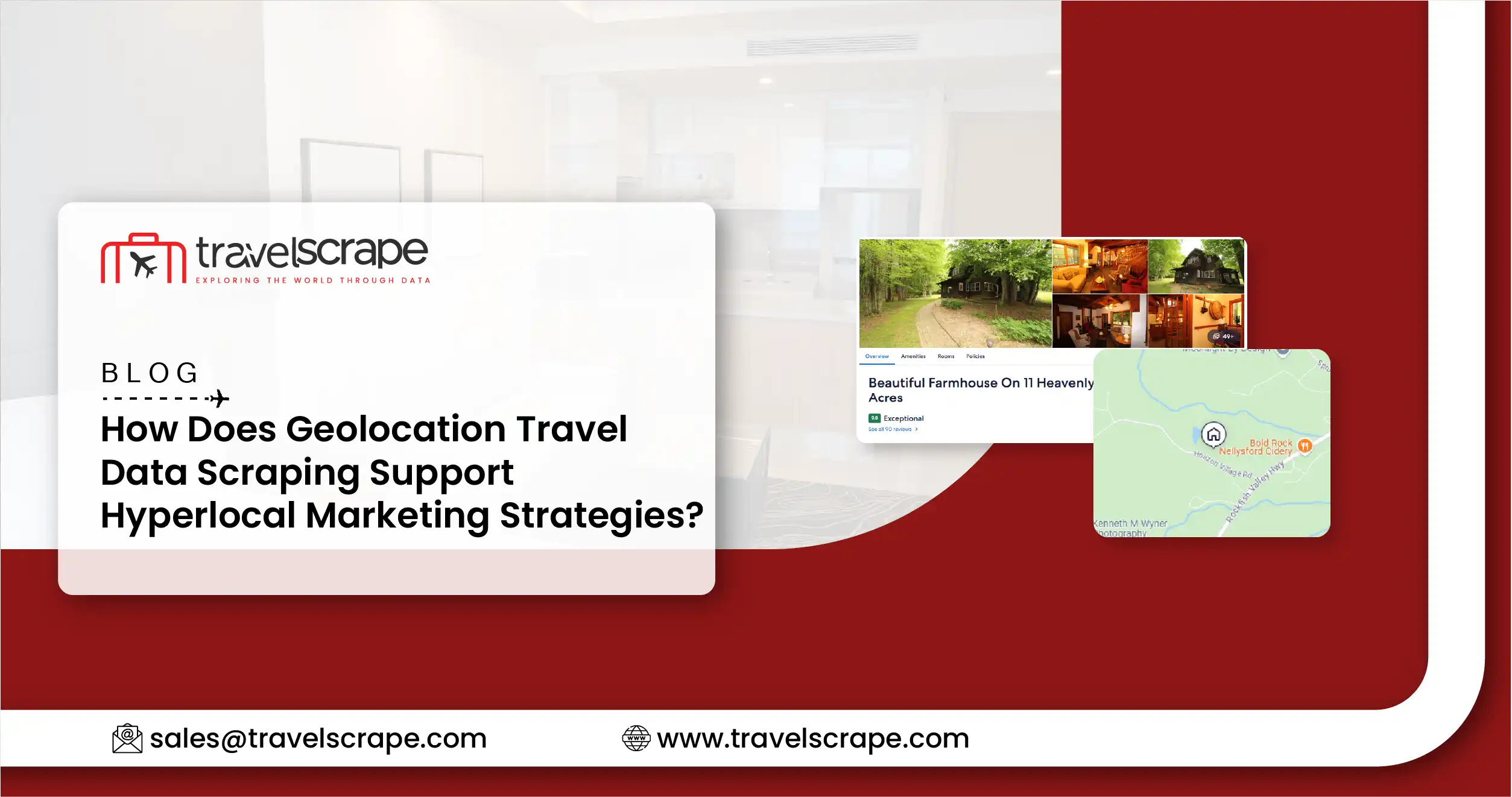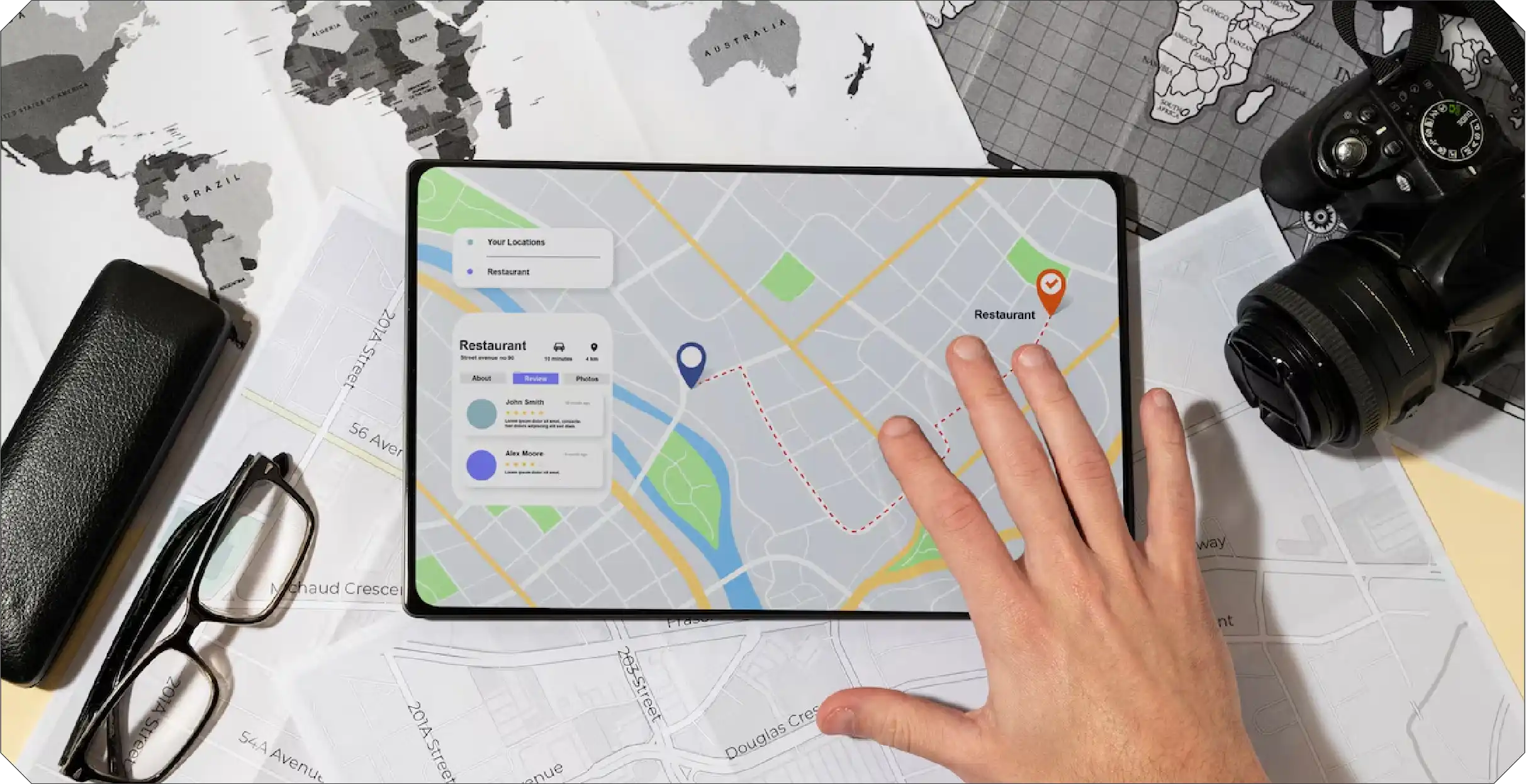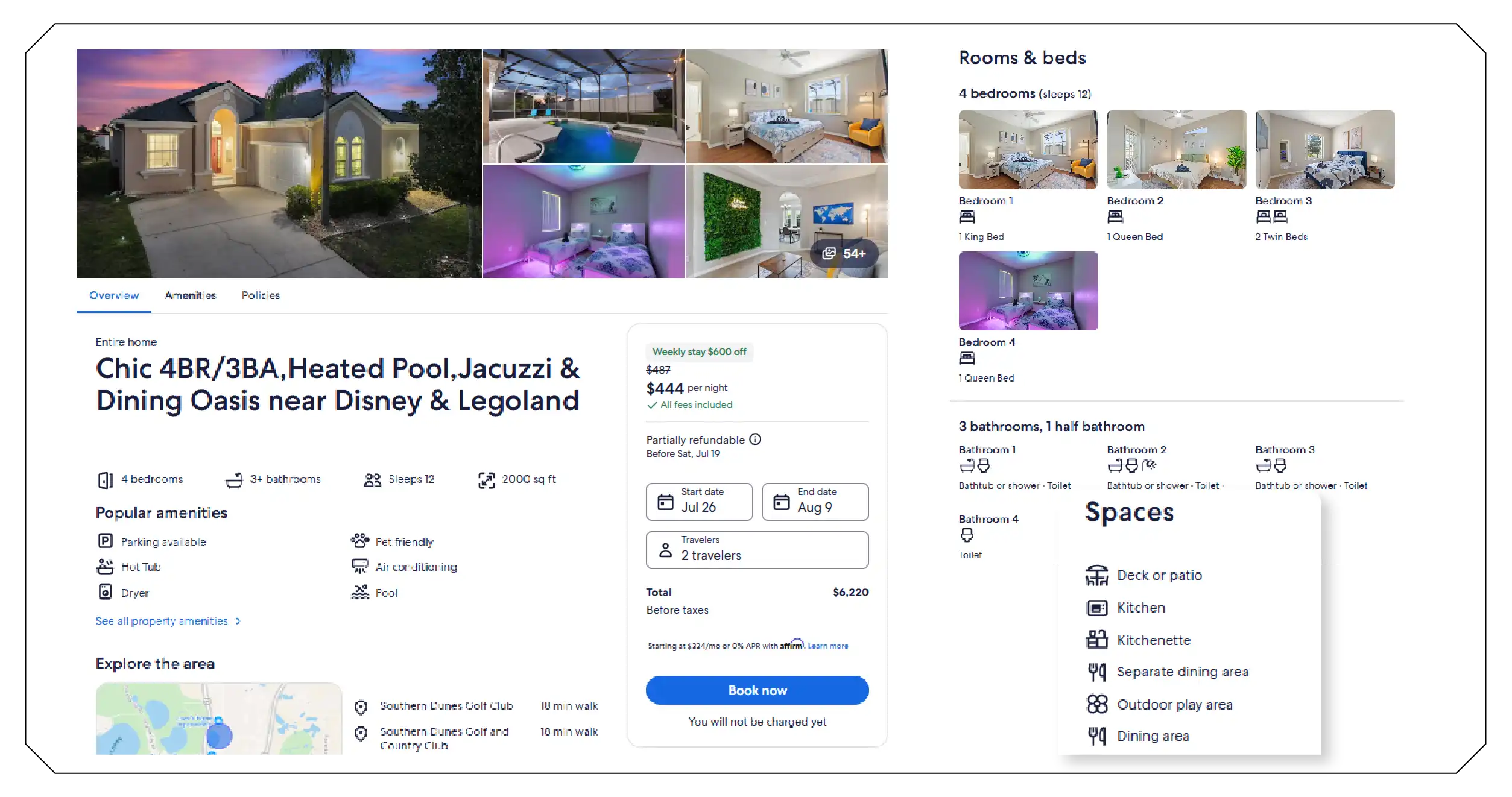How Does Geolocation Travel Data Scraping Support Hyperlocal Marketing Strategies?

Introduction
In today's dynamic tourism economy, understanding traveler behavior on a granular level is no longer optional—it's essential. From personalizing marketing strategies to optimizing pricing by location, travel businesses rely on hyper-targeted insights to stay competitive. This is where geolocation travel data scraping steps in, enabling organizations to tap into digital footprints and extract precise, place-based travel intelligence. When businesses scrape location-based trends, they gain powerful visibility into how travelers interact with destinations in real time.
Whether you're an OTA, a travel startup, or a regional tourism board, location intelligence is a game-changer. By combining user behavior, maps, and mobility data, GPS travel insights help you understand not just where people go, but when, how often, and why. The ability to break down global travel into destination-level analytics gives brands the edge they need in a highly localized market.
The Power of Geolocation in Travel Analytics

Geolocation data enables a shift from macro to micro. Traditional travel data provides national or international summaries. Still, businesses increasingly want to know what's happening at the neighborhood level—who's booking where, what services they use, and what local experiences they seek.
Here's how location data transforms travel intelligence:
- Pinpoints micro-trends in traveler movement
- Measures foot traffic to specific locations
- Detects seasonal shifts in interest per destination
- Helps segment travelers by geography and travel purpose
- Enhances recommendation engines with location preferences
This precision powers localized demand forecasting, allowing operators to predict spikes in tourism, optimize inventory, and tailor marketing per destination.
Applications of Geolocation Travel Data Scraping
From route planners to hotel chains, numerous players can benefit from extracting geolocation-specific data. The most common use cases include:
- Market Expansion: Evaluate new geographic regions based on traveler search behavior and foot traffic.
- Geo-targeted Promotions: Customize campaigns by city or neighborhood based on real-time popularity.
- Experience Personalization: Suggest local attractions, restaurants, and guides based on a user's current location—or their intended destination.
- Risk & Safety Alerts: Monitor regional developments (such as weather or conflict zones) and provide travelers with timely alerts.
- Dynamic Pricing Models: Adjust rates and offerings based on geo-targeted pricing metrics.
For example, a hotel chain can use city-wise travel interest data to determine when and where to offer discounts, introduce new amenities, or initiate expansion efforts.
What Kind of Data Can Be Extracted?
The scope of data points in location-based travel scraping is vast. Here's what you can capture through automated tools:
- Latitude & longitude of attractions or properties
- User check-ins and reviews tied to specific places
- Accommodation rates by region
- Booking frequency by city
- Real-time movement patterns during events or holidays
- Weather-linked travel patterns
- Popular hours and days for tourist spots
By choosing to extract regional travel data, businesses can gain a competitive edge by understanding location-based travel habits, allowing for more informed and agile decision-making.
How to Scrape Local Travel Services?

When tourists visit a city, they rely on various local services, including transportation, food delivery, ride-sharing, tour guides, and more. Collecting insights from these services enables businesses to serve travelers more effectively and develop data-driven local partnerships.
For example, you can scrape local travel services, such as airport shuttle rates, bike rentals, public transportation apps, or local guide bookings. These datasets help understand what tourists engage with the most and what gaps exist in regional service coverage.
Integrating these insights with Travel Aggregators Data Scraping gives a holistic view of both supply and demand in the travel ecosystem.
Building and Using Datasets: Travel Trends & Regions
One of the biggest advantages of geolocation scraping is the ability to build large, structured data repositories. A well-maintained Travel Trends & Regions data can help:
- Spot emerging destinations before they hit the mainstream
- Track long-term interest across cities, states, or countries
- Understand demographic shifts in traveler origins and preferences
- Compare seasonal trends year over year by region
Combined with a powerful Travel Scraping API businesses can automatically pull in this data, normalize it, and integrate it into their internal systems for real-time dashboards or analytics tools.
API and Web Scraping Service Capabilities
.webp)
Automation is key to scaling your travel data collection strategy. A reliable Travel Web Scraping Service enables regular extraction of large-scale data with minimal manual intervention. Scrapers can be configured to target:
- Travel aggregator websites
- Booking engines (hotels, flights, activities)
- Local event platforms
- Maps and navigation services
- Review platforms like TripAdvisor and Yelp
- Ride-share and transport applications
For high-performance scraping, a well-designed Travel Scraping API lets you extract thousands of entries efficiently and helps convert unstructured geodata into actionable insights.
Understanding Regional Hotel Rate Trends
Price benchmarking is a significant use case of geolocation travel data scraping. By tracking Regional Hotel Rate Insights, businesses can optimize their pricing strategy dynamically:
- Compare similar properties in a specific zone
- Track daily fluctuations during events or holidays
- Identify over- or underpriced listings in high-demand areas
- Set thresholds for minimum/maximum nightly rates
This level of insight supports revenue managers and travel platforms to stay competitive in real-time.
Travel Data Scraping Trends in 2025
In 2025, several trends are shaping how geolocation data is scraped and used in travel:
- Ethical scraping and data compliance are becoming non-negotiable
- AI-enhanced scraping tools help detect traveler sentiment from geo-tagged content
- Cross-device behavior (mobile, wearables, and IoT) is adding depth to location datasets
- Visual data from maps and photos is being integrated into analytics
- Micro-trend detection is enabling pop-up offerings and local experiences
These Travel Data Scraping Trends point to a future where location-based personalization isn't just appreciated—travelers expect it.
Visualizing Map-Based Travel Insights
.webp)
To make the most of your scraped data, visualization matters. Map-based travel insights transform raw coordinates into actionable information that marketing teams, hotel chains, local governments, and other organizations can utilize.
For example, you can create:
- Heat maps showing tourism density by neighborhood
- Bubble charts tracking interest in landmarks
- Route maps of tourist movement
- Comparative pricing overlays by district
With these tools, stakeholders can respond more quickly to localized surges in demand or uncover hidden opportunities.
The Role of Coordinates in Data Collection
A core component of geolocation scraping is the ability to scrape location coordinates directly from listings, reviews, and navigation apps. When linked with user-generated content or booking data, coordinates tell a powerful story:
- Which specific locations see the most tourist activity
- Which attractions are regularly overlooked
- How far are tourists willing to travel within a region
- How lodging clusters around attractions or transit hubs
Collecting accurate travel data by region helps break the one-size-fits-all approach and bring accurate localization to travel planning and marketing.
How Travel Scrape Can Help You?
- Targeted Geolocation Extraction: We specialize in scraping location coordinates from travel listings, reviews, maps, and mobile apps to identify exact tourist hotspots and activity zones.
- City-Wise and Regional Travel Insights: Our tools help extract regional travel data and travel data by region, enabling precise analysis of traveler behavior across cities, states, or neighborhoods.
- Real-Time Destination Monitoring: We offer automated systems for map-based travel insights and tracking traveler interest over time—ideal for localized demand forecasting and dynamic planning.
- Comprehensive Local Services Coverage: We scrape local travel services, including transportation, hotels, and experience platforms, to understand user behavior around hyperlocal offerings.
- API-Ready Geo-Analytics Integration: Through our Travel Scraping API, businesses can seamlessly integrate geo-enriched scraping capabilities into dashboards for actionable, real-time insights.
Conclusion
The future of travel is local, personal, and data-driven. By leveraging geolocation travel data scraping, organizations can transition from generic insights to precision analytics that drive bookings, increase satisfaction, and unlock untapped markets. The combination of real-time location data, automation, and cross-platform intelligence enables smarter travel strategies.
As traveler behavior grows more mobile and dynamic, businesses that adopt mobile geodata for tourism will gain unmatched insight into when and where their audience moves. When paired with geo-enriched scraping technologies, the result is a robust understanding of geographic behavior patterns across different travel verticals.
Ultimately, the shift toward hyperlocal travel analytics empowers travel companies not only to follow trends but also to shape them.
Ready to elevate your travel business with cutting-edge data insights? Get in touch with Travel Scrape today to explore how our end-to-end data solutions can uncover new revenue streams, enhance your offerings, and strengthen your competitive edge in the travel market.

